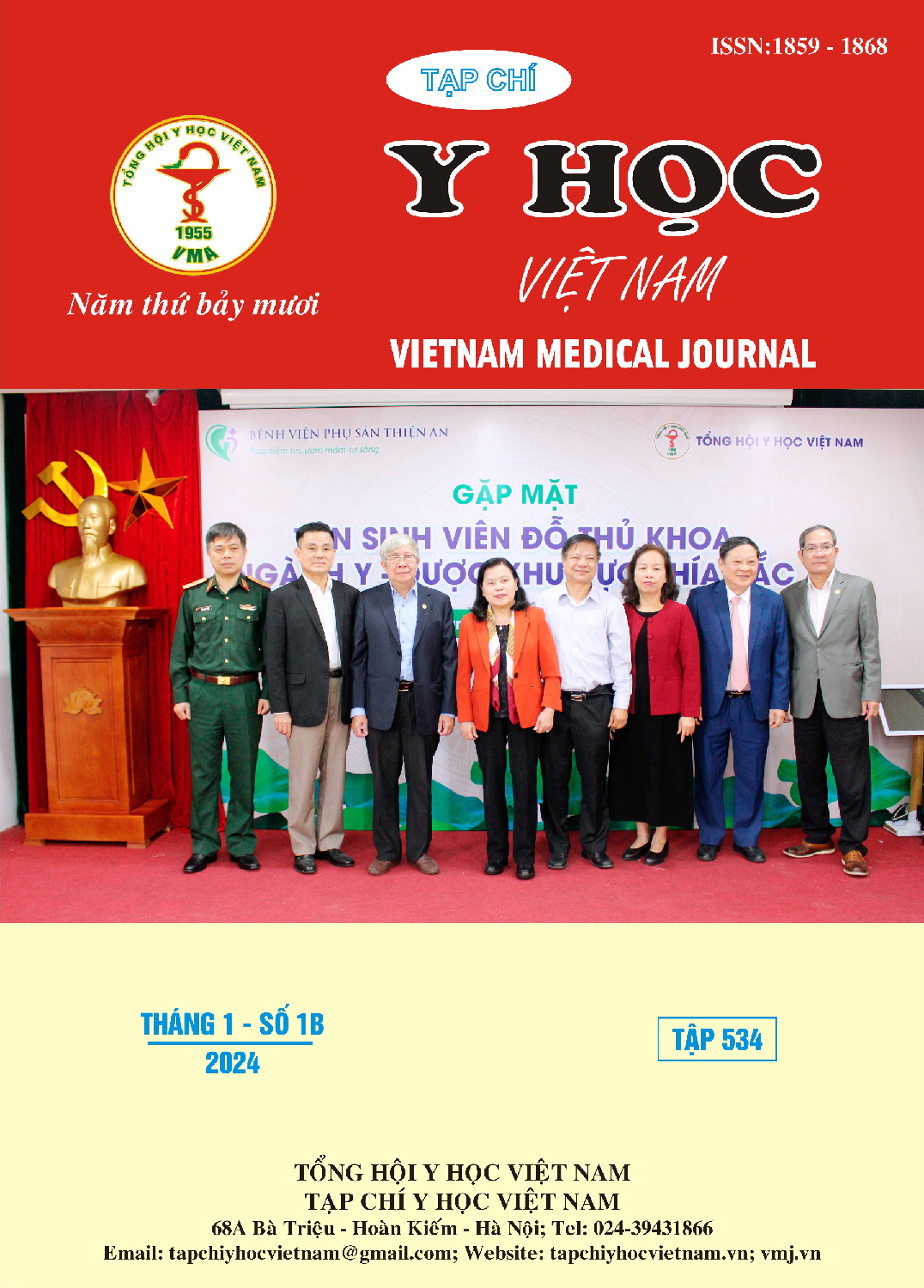FEASIBILITY, EFFICACY, AND SAFETY OF HIS BUNDLE PACEMAKER
Main Article Content
Abstract
Objective: The study sought to measure the clinical and procedural characteristics and investigate the safety and efficacy of the His bundle pacing technique. Background: Right ventricular pacing is associated with an elevated risk of heart failure, but device reprogramming and upgrades have significant challenges. HBP has emerged as an alternative and is reported to be highly successful in the hands of highly experienced centers. Method: All patients referred for permanent pacemaker implantation at the Cho Ray Hospital (Hochiminh City, Vietnam) between October 2019 and January 2023 were evaluated. Result: The present study was carried out in 16 patients referring to implantation of pacemaker-associated bradycardia. 13 cases out of all (81.25%) had atrioventricular nodal or infranodal delay or block. His bundle lead insertion was successful in 15 patients (93.75%), but one failed case was because of the infrahisian block mandatory changing to left bundle pacing. The complication included one patient experiencing lead revision in the second procedure due to loss of capture, one remaining patient with a threshold increase but no need to intervene, and no record of any others. In the heart failure patients (N=8), His bundle pacing insignificantly reduced left ventricular end-diastolic volume (EDV (mL), 232.38 ± 59.37 vs. 248.86 ± 72.45, P = 0.08), but improved left ventricular ejection fraction statistically (LVEF (%), 40.65 ± 19.38 vs. 32.11 ± 12.74, P = 0.005). The correction type pacing narrowed the QRS duration evidently (QRS (ms), 108.00 ± 9.76 vs. 132.40 ± 12.12, P = 0.043) based on the shortening propensity of the left (RWPT V6 (ms), 77.40 ± 7.40 vs. 92.60 ± 20.21, P = 0.138), and right ventricular activation (RWPT V1 (ms), 57.60 ± 7.40 vs. 84.00 ± 36.46, P = 0.104), simultaneously, left ventricular remodeling reversal examined by LVEDD (mm) (50.96 ± 7.74 vs. 53.64± 10.32, P = 0.08), EDV (mL) (176.96 ± 53.15 vs. 198.75 ± 72.56, P = 0.08), and LVEF (%) (54.86 ± 12.34 vs. 47.40 ± 18.48, P = 0.068), but not achieved statistical significance. In the narrow QRS group, His bundle pacing maintained a rapid left depolarization (RWPT V6 (ms), 71.80 ± 14.65 vs. 71.00 ± 13.10, P > 0.05), not activated right ventricle early (RWPT V1 (ms), 59.20 ± 17.53 vs. 62.80 ± 17.53, P = 0.225), however, still preserved biventricular electrical synchrony (RWPT V6-V1 (ms), 12.60 ± 6.62 vs. 8.20 ± 2.17, P = 0.138). Significant alteration of the repolarization process was not attested in the aspects of duration (QT (ms), 438.50 ± 41.98 vs. 432.94 ± 49.47, P = 0.176) and repolarization dispersion (Tpe (ms), 91.00 ± 10.57 vs. 88.38 ± 10.63, P = 0.104). Conclusion: His bundle pacing could be feasible with a high success rate and achieve procedural safety without unacceptable complications. This technique obtained the left ventricular remodeling reversal in heart failure patients. In addition, it might maintain electrical synchrony in both ventricles and insignificant alteration of the repolarization process. Nevertheless, several essential limitations will still hinder the procedure being implemented widerly, such as increasing threshold or micro-dislogment requiring a mandatory lead revision, especially in the initial experiment center.
Article Details
References
2. Adabag S, Roukoz H, Anand IS, Moss AJ (2011). Cardiac resynchronization therapy in patients with minimal heart failure. J Am Coll Cardiol, 58:935–41.
3. Narula OS (1977). Longitudinal dissociation in the His bundle. Bundle branch block due to asynchronous conduction within the His bundle in man. Circulation, 56:996–1006.
4. Vijayaraman P, Dandamudi G, Zanon F, et al. (2018). Permanent His bundle pacing: recommendations from a multicenter His bundle pacing collaborative working group for standardization of definitions, implant measurements, and follow-up. Heart Rhythm, 15:460–8.
5. Jastrzębski M, Burri H, Kiełbasa G, Curila K, Moskal P, Bednarek A, Rajzer M, Vijayaraman P. The V6-V1 interpeak interval: a novel criterion for the diagnosis of left bundle branch capture. Europace 2022 Jan 4, 24(1):40-47
6. Antzelevitch C (2010). M cells in the human heart. Circ Res, 106(5):815–817
7. Kawashima T, Sasaki H (2011). Gross anatomy of the human cardiac conduction system with comparative morphological and developmental implications for human application. Ann Anat,193:1–12.
8. Dinshaw L, Münch J, Dickow J, Lezius S, Willems S, Hoffmann BA, Patten M (2018). The T-peak-to-T-end interval: a novel ECG marker for ventricular arrhythmia and appropriate ICD therapy in patients with hypertrophic cardiomyopathy. Clin Res Cardiol., 107(2):130-137.


